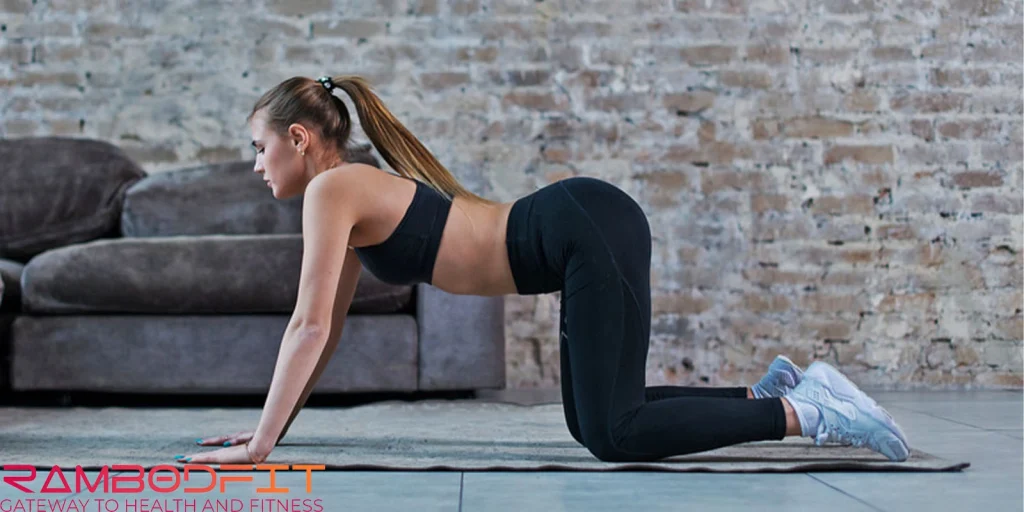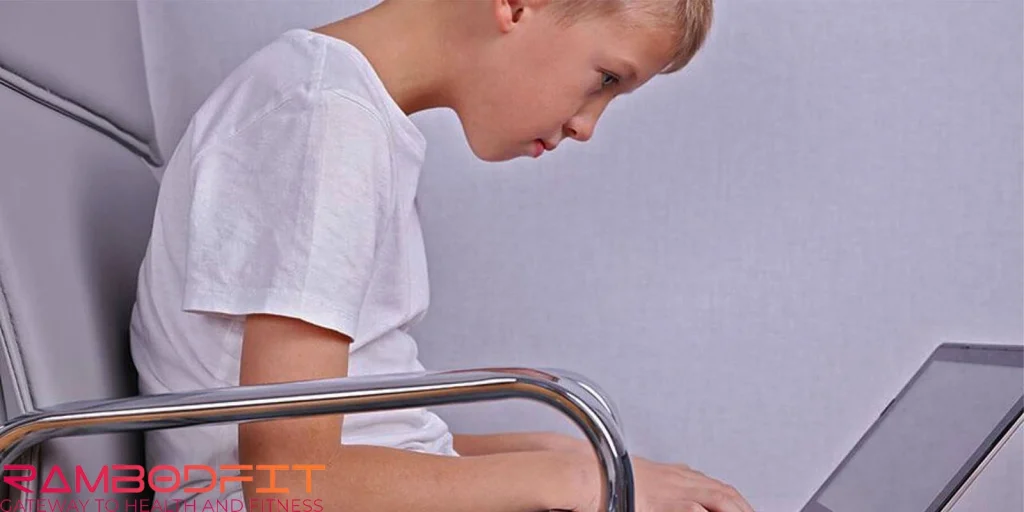


Nowadays, many people around the world are experiencing postural issues that can lead to discomfort, pain, and other complications. On Rambodfit, we will explore postural problems and how to fix them using scientific-based resources.
Before we talk about postural problems and how to fix them, we should know their causes and get familiar with the anatomy and biomechanics of different muscles in the body. The more you know about these the better you can fix these issues in your postures.
However, remember to consult with a doctor or an expert in corrective exercise before you start doing the exercises yourself because doing them alone may worsen your posture. Also, try not to become sensitive to your posture! There are people who are ok but they think they have a problem.

There is no such thing as a “perfect” posture or a perfect body, however, good posture helps you have a balance and good looking style and better muscle function.
Bad posture can be caused by some bad habits during the day that you don’t even think about them anymore. For example, slouching when you are watching TV or putting the backpack on one shoulder and …
You can somehow learn postural problems and how to fix them by doing some yoga and mobility exercises.
Bad postures can lead to:
Except for some bad habits that can cause postural issues, other reasons can cause this problem like being overweight, wearing improper shoes or high heels. Also, some people are born with scoliosis which can affect the posture from childhood.
Here we inform you about 10 common postural problems and how to fix them. By adding these exercises to your daily routine you may be able to improve your posture after a while.
Forward head happens when the head is imposed forward to the shoulders. Often caused by prolonged use of computers, phones, and reading while slouching.
This posture places stress on C1 to C7 and the upper trapezius muscles which can lead to neck and shoulder pain. It is more common in children nowadays!
A study of healthy college students in Pubmed found that a forward head posture decreases the lower thorax (mid-spine) mobility, leading to decreased respiratory function.
Corrections:
This posture occurs when the chest muscles are too tight and the upper back muscles are weak. Rounded shoulders are more common with desk workers and those with sedentary lifestyles.
Corrections:

Kyphosis involves an exaggerated rounding of the upper back, leading to a hunched appearance. It often results from chronic poor posture or conditions like osteoporosis.
Prolonged slouching, weak thoracic extensor muscles, and spinal deformities or degeneration can be the causes of postural problems and how to fix them is necessary.
Corrections:
Lordosis is characterized by an exaggerated inward curve of the lower back, often accompanied by anterior pelvic tilt. It places excess stress on the lumbar spine and can cause lower back pain.
Weak core and glutes, tight hip flexors, and lower back muscles are key factors to cause lordosis.
Corrections:
APT occurs when the pelvis tilts forward, creating an exaggerated arch in the lower back and causing the abdomen to protrude. Prolonged sitting, weak glutes and hamstrings, and tight hip flexors can be the reasons for postural problems and how to fix them is a priority.
Corrections:
Scoliosis involves a lateral curvature of the spine, which can cause uneven shoulders and hips, back pain, and difficulty with movement. Congenital spine deformities, neuromuscular conditions, and poor posture during growth years can lead to postural problems and how to fix them should be done in the early stage.
Corrections:

Flat back posture occurs when the natural lumbar curve is lost, causing the back to appear flat. It can lead to stiffness, pain, and difficulty standing for extended periods. Weak back extensor muscles, tight hamstrings and glutes, and prolonged sitting or slouching are the causes of flat back posture.
Corrections:
Uneven shoulders occur when one shoulder is higher than the other, often due to muscle imbalances or spinal conditions like scoliosis. Muscle imbalances between the left and right sides, carrying heavy bags on one side, and spinal misalignment are key factors for postural problems and how to fix them should be done before it worsen.
Corrections:
Correcting posture is a long-term commitment that requires consistent effort and mindful adjustments. Incorporating targeted exercises, ergonomic adjustments, and regular stretching can make a significant difference. Consulting a physical therapist or corrective exercise specialist is always beneficial for personalized guidance.
Good posture isn’t just about looking good, it’s essential for reducing pain, improving mobility, and enhancing overall well-being! Knowing postural problems and how to fix them is critical and can affect every aspect of your lifestyle.
For more corrective exercises tips check the links below:
Postural problems are often caused by:
• Sedentary lifestyles or prolonged sitting.
• Poor ergonomics at workstations.
• Muscle imbalances, such as tight chest muscles and weak back muscles.
• Repetitive movements or incorrect forms during activities.
• Underlying conditions like scoliosis or osteoporosis.
many posture problems can be corrected with consistent effort. Targeted exercises, stretching, ergonomic adjustments, and postural awareness can improve alignment. Severe cases may require physical therapy, bracing, or medical intervention.
The time required depends on the severity of the issue, consistency with exercises, and overall health. Minor posture problems may improve within weeks, while more significant issues like scoliosis or kyphosis may take months of consistent work.
However, It is better to add these corrective exercises to your daily routine and consult with experts before doing anything by yourself.
By knowing postural problems and how to fix them you may get a good result soon.